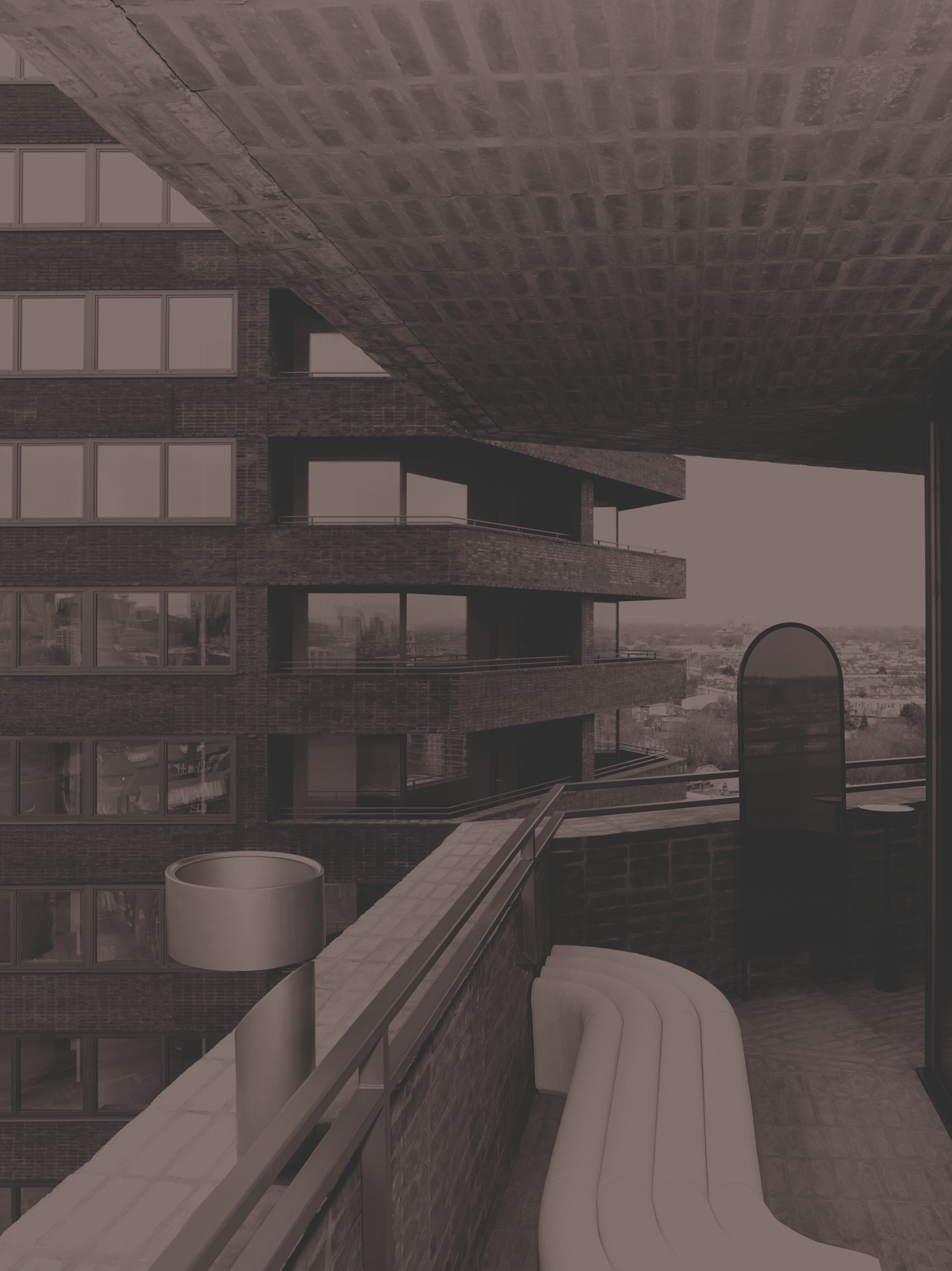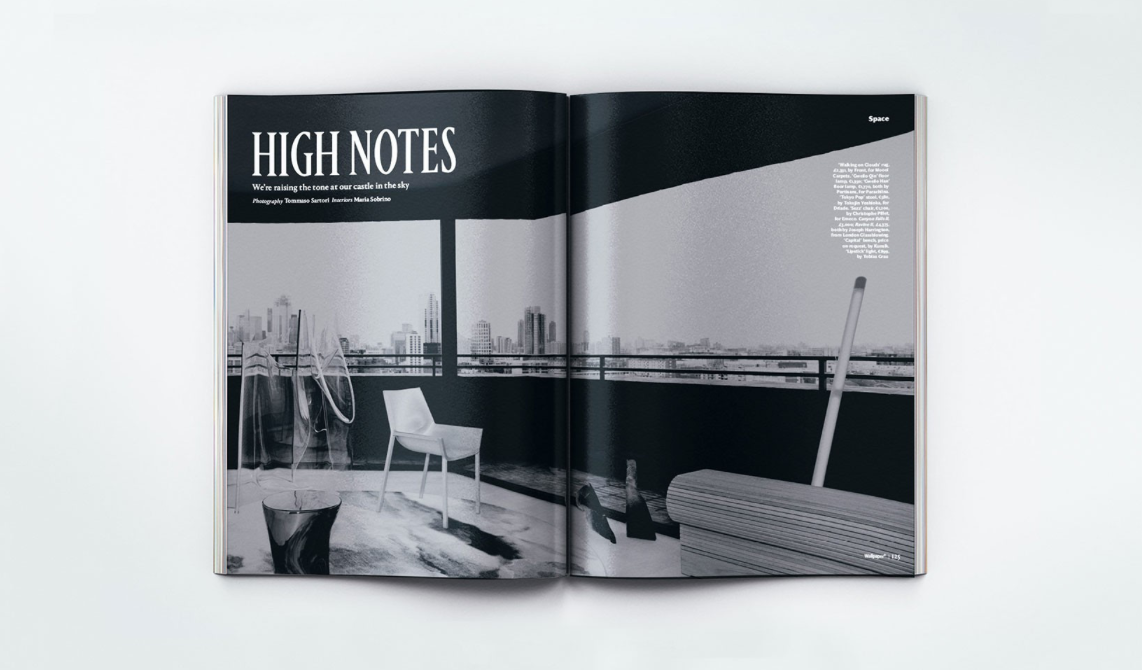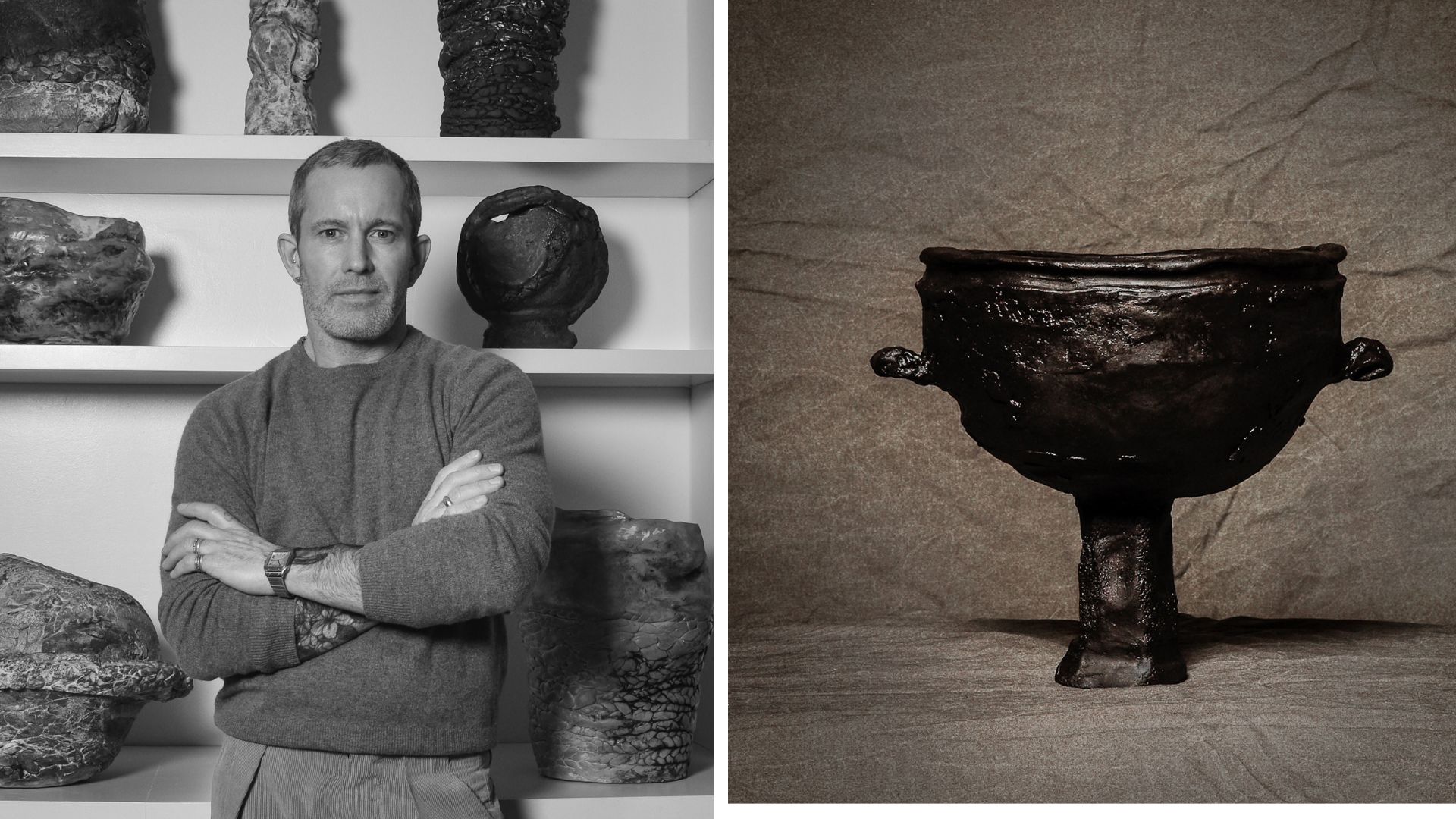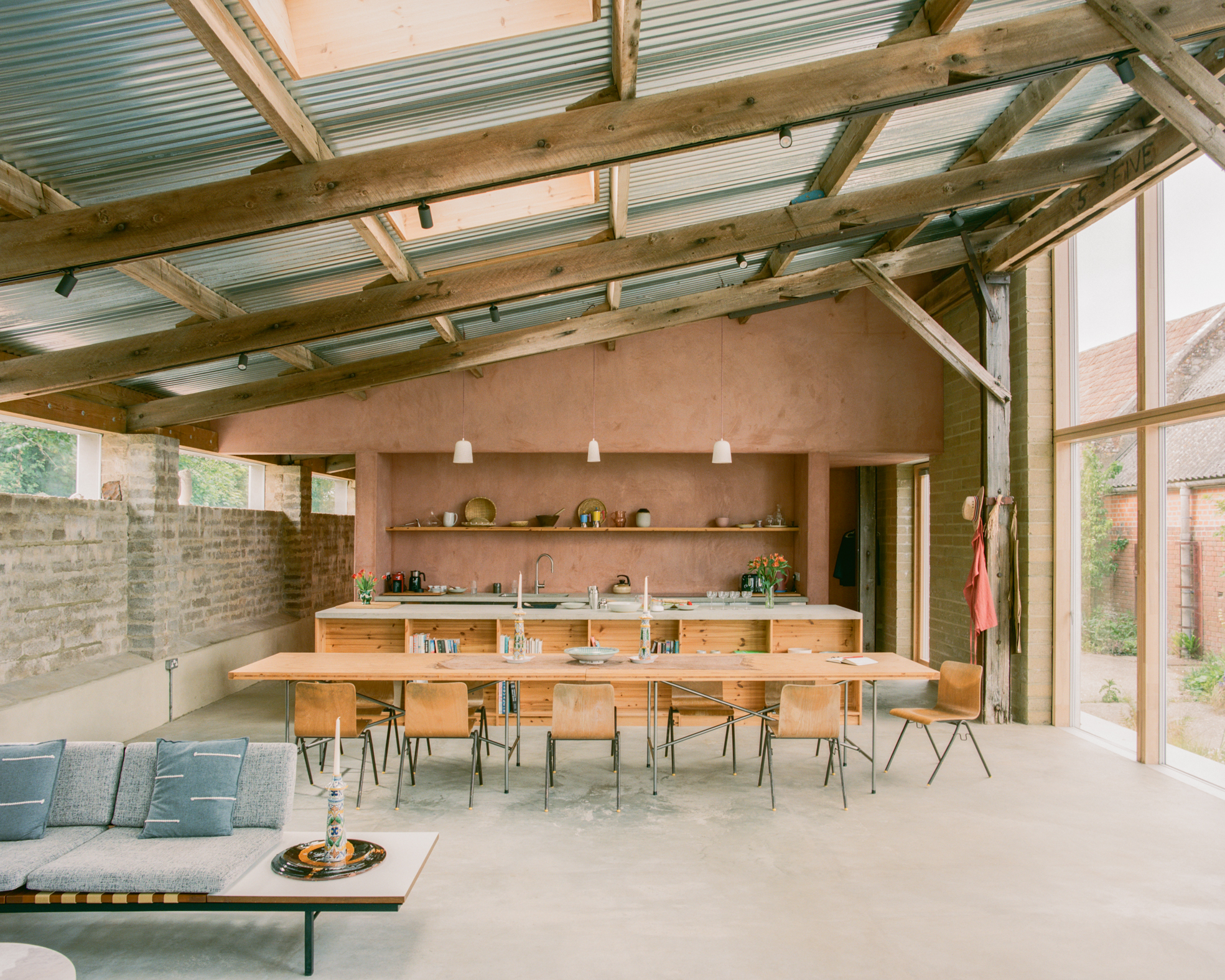London’s Hoxton Press is an ode to brick
Karakusevic Carson Architects and David Chipperfield Architects’ Hackney housing complex features two towers – one of red, and the other of grey handmade bricks. Keeping up appearances, the curved walls of the ground floor interior spaces are also clad bricks

Brick can be a truly marvelous material. Combining the warmth and tactility of timber with the sculptural qualities and flexibility of concrete, while still feeling approachable and familiar, brick has been the material of choice for many an architectural masterpiece; and the recently completed Hoxton Press in east London is a case in point.
The residential development, created as a collaboration between Karakusevic Carson Architects and David Chipperfield Architects, is an elegant composition of two towers that form part of a wider estate renewal for Hackney. Part of a larger project designed by Karakusevic Carson in 2010, Hoxton Press is the third phase of the development – a joint venture between the borough and property specialists Anthology.
The two high rises, spanning 16 and 20 storeys each, are entirely externally clad in brick – one in red-hued and the other in grey-coloured handmade blocks in stack bond style. The skin is seamless and beautifully executed in a way that enhances the design’s aesthetics, creating a truly powerful whole. Undulating landscaping around the towers and a ground level that remains true to the overall approach (with curving fully brick-clad walls and floors) further underline the scheme's identity as an ode to brick.

Hoxton Press was the location for our Wallpaper* June 2019 issue (W*243) interiors shoot with interiors styled by Maria Sobrino
Yet, this project is not just about looks. Including some 200 apartments, the two towers’ dynamic presence also acts as a gateway to the wider estate. The circulation core was placed right at the heart of the towers’ hexagonal footprint, allowing for flexible outward-facing floorplate areas for the apartments, which are bright and open throughout. The rotation of the overall volumes minimises overlooking, even though every unit has outdoors space with the top duplexes also spilling out to green roof terraces. Generous lobbies, retail space and a parking garage entrance occupy the ground level, creating an coherent and transparent base.
‘Through their solidity and robustness, the buildings challenge contemporary preconceptions about high-rise residential developments. The permeable ground floors, which open up to the public realm, also address the limitations of public interaction that we often find in high-rise buildings,’ says Chipperfield. Meanwhile, ‘the sale of the apartments will cross-subsidise the construction of new council homes across the rest of the estate,’ adds the team.




To see more of our interiors, pick up a copy of the Wallpaper* June 2019 issue (W*243)
INFORMATION
For more information, visit the Karakusevic Carson Architects website and the David Chipperfield Architects website
Receive our daily digest of inspiration, escapism and design stories from around the world direct to your inbox.
Ellie Stathaki is the Architecture & Environment Director at Wallpaper*. She trained as an architect at the Aristotle University of Thessaloniki in Greece and studied architectural history at the Bartlett in London. Now an established journalist, she has been a member of the Wallpaper* team since 2006, visiting buildings across the globe and interviewing leading architects such as Tadao Ando and Rem Koolhaas. Ellie has also taken part in judging panels, moderated events, curated shows and contributed in books, such as The Contemporary House (Thames & Hudson, 2018), Glenn Sestig Architecture Diary (2020) and House London (2022).
-
 How Isamu Noguchi dissolved the boundaries between art, design and the city
How Isamu Noguchi dissolved the boundaries between art, design and the cityIsamu Noguchi shaped cities, interiors and everyday rituals through design: here’s everything you need to know about the interdisciplinary American modernist who believed art belonged in public life
-
 Photographer John Arsenault’s ceramic vessels prove it’s never too late to shift focus
Photographer John Arsenault’s ceramic vessels prove it’s never too late to shift focusAfter years creating portraits, the artist has revealed a series of intriguing and sexually-charged pieces in New York
-
 Wallpaper* Architect Of The Year 2026: Lina Ghotmeh, France
Wallpaper* Architect Of The Year 2026: Lina Ghotmeh, FranceAsked about a building that made her smile, Lina Ghotmeh – one of three Architects of the Year at the 2026 Wallpaper* Design Awards – discusses Luis Barragán’s Capuchin Convent Chapel and more
-
 Wallpaper* Architect Of The Year 2026: Je Ahn of Studio Weave on a building that made him smile
Wallpaper* Architect Of The Year 2026: Je Ahn of Studio Weave on a building that made him smileWe ask our three Architects of the Year at the 2026 Wallpaper* Design Awards about a building that made them smile. Here, Je Ahn of Studio Weave discusses Can Lis in Mallorca
-
 You can soon step inside David Bowie’s childhood home
You can soon step inside David Bowie’s childhood homeWith a set completion date by 2027, the musician's childhood home in Bromley will be restored to its original 1960s appearance, including Bowie’s bedroom, the launchpad for his long career
-
 Welcome to The Float House, proof that life on London’s canals can be warm and elegant
Welcome to The Float House, proof that life on London’s canals can be warm and elegantMoored on London’s Grand Union Canal, The Float House, designed by TiggColl Architects, reimagines what a houseboat can be
-
 Wallpaper* Design Awards: this rammed-earth house in Wiltshire is an eco exemplar
Wallpaper* Design Awards: this rammed-earth house in Wiltshire is an eco exemplarTuckey Design Studio’s rammed-earth house in the UK's Wiltshire countryside stands out for its forward-thinking, sustainable building methods – which earned it a place in our trio of Best Use of Material winners at the 2026 Wallpaper* Design Awards
-
 Fulham FC’s new Riverside Stand by Populous reshapes the match-day experience and beyond
Fulham FC’s new Riverside Stand by Populous reshapes the match-day experience and beyondPopulous has transformed Fulham FC’s image with a glamorous new stand, part of its mission to create the next generation of entertainment architecture, from London to Rome and Riyadh
-
 This modern Clapham house is nestled indulgently in its garden
This modern Clapham house is nestled indulgently in its gardenA Clapham house keeps a low profile in south London, at once merging with its environment and making a bold, modern statement; we revisit a story from the Wallpaper* archives
-
 Step inside this perfectly pitched stone cottage in the Scottish Highlands
Step inside this perfectly pitched stone cottage in the Scottish HighlandsA stone cottage transformed by award-winning Glasgow-based practice Loader Monteith reimagines an old dwelling near Inverness into a cosy contemporary home
-
 This curved brick home by Flawk blends quiet sophistication and playful details
This curved brick home by Flawk blends quiet sophistication and playful detailsDistilling developer Flawk’s belief that architecture can be joyful, precise and human, Runda brings a curving, sculptural form to a quiet corner of north London